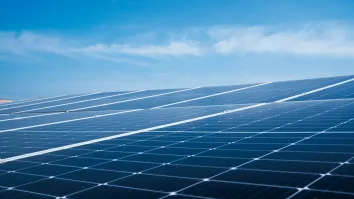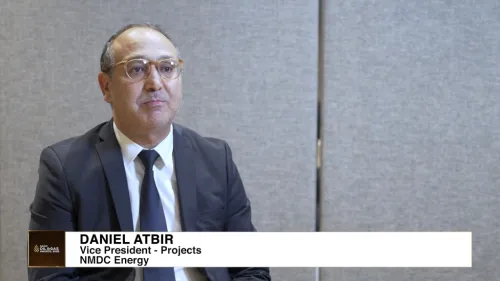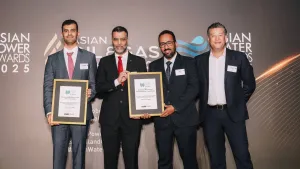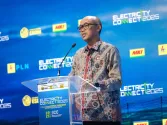What you don't know about solar PV projects in China (Part 2)
By Andrew Nicholls, Carolyn Dong, and Yao ChiThe 2011 Feed-in-Tariff (Solar)
As mentioned in the previous article, in July 2011, the Chinese government decided to set a unified national benchmark price for solar PV projects by releasing the Notice of the National Development and Reform Commission on Perfection of Policy Regarding the Feed-in Tariff for Power Generated by Solar PV (the "2011 Feed-in-Tariff (Solar)").
The 2011 Feed-in-Tariff (Solar) divided all non-bidding Chinese solar projects into two categories, projects approved prior to July 1, 2011 and which have achieved commercial operation prior to December 31, 2011.
These projects are entitled to a tariff of 1.15 RMB per kWh, and projects approved after July 1, 2011 (or approved prior to that date but have not begun commercial operation by December 31,2011).
These projects are entitled to a tariff of 1 RMB per kWh. However, exceptions have been given to projects located in Tibet, which, under certain circumstances can still receive a Feed-in-Tariff of RMB 1.15.
Revision of the 2011 Feed-in-Tariff (Solar) - the New Feed-in-Tariff Policy
The New Feed-in-Tariff Policy is aimed at addressing existing problems with the current Feed-in-Tariff
The main problem with the 2011 Feed-in-Tariff (Solar) was that, since it did not differentiate between the different regions in China, it created an incentive for project developers to largely ignore the eastern part of China and entirely focus on provinces in the western region (like Qinghai, Gansu, Ningxia, Xingjiang and Inner Mongolia) due to the higher level of solar radiation in the west.
However, since the western regions are generally less developed with lower population densities and consequently low energy demands, the installations in those areas were faced with issues related to grid connection, transmission and distribution.
The new Feed-in-Tariffs
After obtaining public feedback, the NDRC released the Notice on Improving the Development of Solar PV Industry by Utilizing the Price Leverage Effect (the "New Feed-in-Tariff Policy") for solar PV projects, which has split the country into three different regions and provided a different Feed-in-Tariff for each region. The new Feed-in-Tariffs exceeds what was originally proposed in the disclosure draft1 and is higher than the market expectation.
The applicable Feed-in Tariffs are:
• 0.90 RMB per kWh for Type-I areas, including Ningxia; Haixi of Qinghai Province; Jiayuguan,Wuwei, Zhangye, Jiuquan, Dunhuang, Jinchang of Gansu Province; Hami, Tacheng, Aertai, Kelamayi of Xinjiang Province; Inner Mongolia (other than Chifeng, Tongliao, Xinganmeng, Hulunbeier);
• 0.95 RMB per kWh for Type-II areas, including Beijing; Tianjin; Heilongjiang; Jilin; Liaoning; Sichuan; Yunnan; Chifeng, Tongliao, Xinganmeng, Hulunbeier in Inner Mongolia; Chengde, Zhangjiakou, Tangshan, Qinhuangdao of Hebei Province; Datong, Suzhou, Yizhou of Shanxi Province; Yulin, Yanan of Shannxi Province; places other than the Type-I areas in Qinghai, Gansu and Xinjiang;
• RMB per kWh for Type-III for areas other than the above2
The new level of Feed-in-Tariff will be more proportionate because it is determined by the level of solar radiation in each region.
The New Feed-in-Tariff Proposals are aimed at ensuring an IRR of more than 8% across all four regions.
Additional Feed-in-Tariff for Distributed Solar PV Power generation projects
There is also an additional Feed-in-Tariff specifically aimed at improving the market for distributed Solar PV projects.
For distributed solar PV projects, the New Feed-in-Tariff Policy has proposed an additional 0.42 RMB/kWh Feed-in-Tariff on top of the local electricity tariff to be paid by the grid companies to the project companies. This additional Feed-in-Tariff will generally be for a 20 year period.
However, the amount and period of the additional Feed-in-Tariff will depend on the project and the specific region. Given the different levels of retail electricity tariffs throughout China, a number of provinces will certainly be more attractive from an IRR perspective than others.
Obtaining the Feed-In-Tariff for your solar project
The current 2011 Feed-in-Tariff (Solar) and the New Feed-in-Tariff Policy do not provide for any additional or specific approval procedures for obtaining the Feed-in-Tariffs for your solar project.
According to media reports, the NEA is now in the final stages of preparing the detailed rules regarding how to calculate the power generated, how to settle the power price and how to implement the government subsidies and tax incentives. It is expected that these rules will provide practical guidance on the implementation of all the previously issued policies on encouraging solar power generation.
In practice, the approval process to obtain the Feed-in-Tariff will be the same as the normal approvals procedure for any solar project as set out above.
The final NDRC approval will specify the applicable Feed-in-Tariff in the formal approval documentation for a project.
Approval checklist for solar PV projects
In order to construct a solar PV project in China the following will need to be obtained (note this is not an exhaustive list):
1. NRDC initial approval/preliminary opinion;
2. land use permits;
3. planning permits;
4. construction permits;
5. environmental impact assessments;
6. fire safety assessments;
7. approval of the project's soil and water conservation plan;
8. cultural heritage assessments;
9. MOF assessment for government subsidies;
10. grid company approval to connect to the grid;
11. final NRDC approval (which will set out all the important aspects of the solar project and the applicable Feed-in-Tariff); and
12. foreign investment verification and approval
Chinese renewables projects involve a unique set of risks. Developers and lenders need to understand these risks, and address and adapt their project structures and project documents accordingly.
The challenges cannot be underestimated. However, developers who can properly manage these risks stand to take a share of what is potentially the largest solar market in the world.
______________
1The NDRC published the disclosure draft of the Notice on the Perfection of the Feed-in Tariff for Power Generated by Solar PV (关于完善光伏发电价格政策通知) in March 2013. The disclosure draft proposed different Feed-in-Tariffs for four different regions: (i) 0.75 RMB per kWh for Type-I areas, including Haixi, Haibei, Guoluo, and Yushu of Qinghai province; (ii) 0.85 RMB per kWh for Type-II areas, including Xinjiang, Ningxia, Inner Mongolia, Xining, and several counties in Qinghai, Sichuan and Yunan; (iii) 0.95 RMB per kWh for Type-III areas, including Beijing, Tianjin, Heilongjiang, Jilin, Liaoning, and several counties in Heibei, Shanxi and other areas in Yunan and Gansu; and (iv) 1 RMB per kWh for areas other than the above.
2The applicable Feed-in-Tariff for Tibet will be decided separately in another policy.




















 Advertise
Advertise







